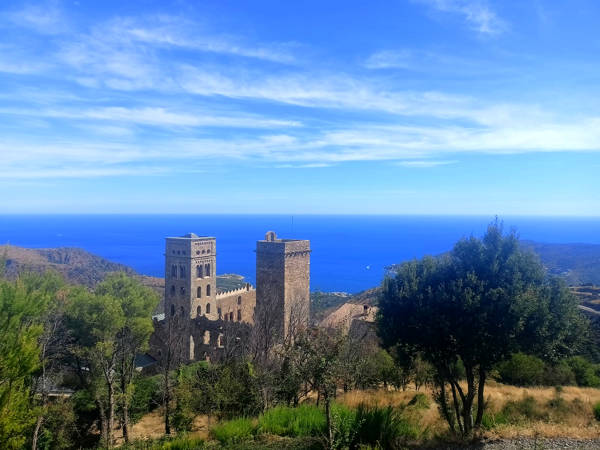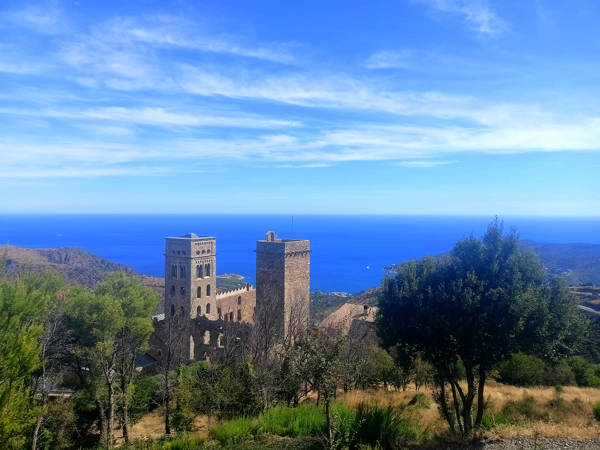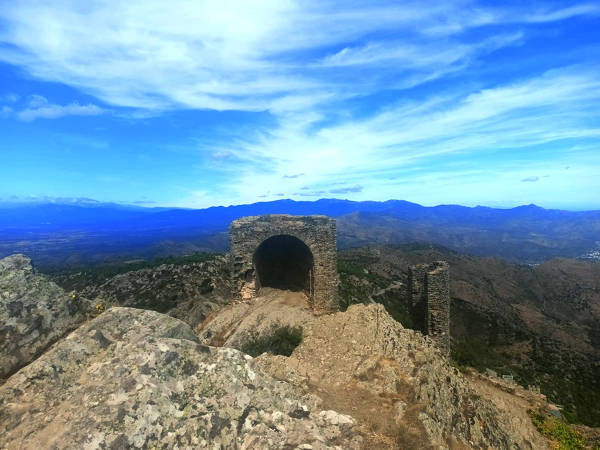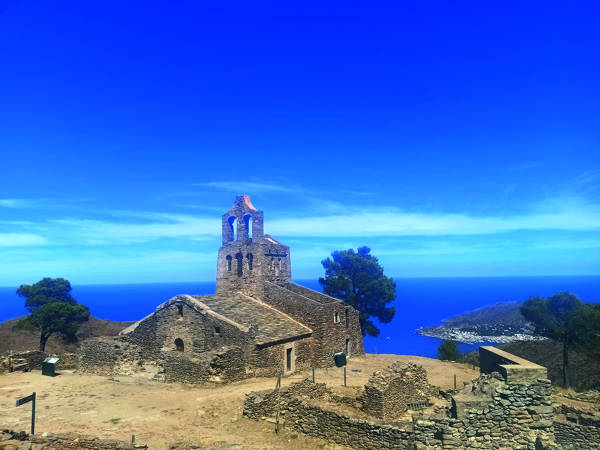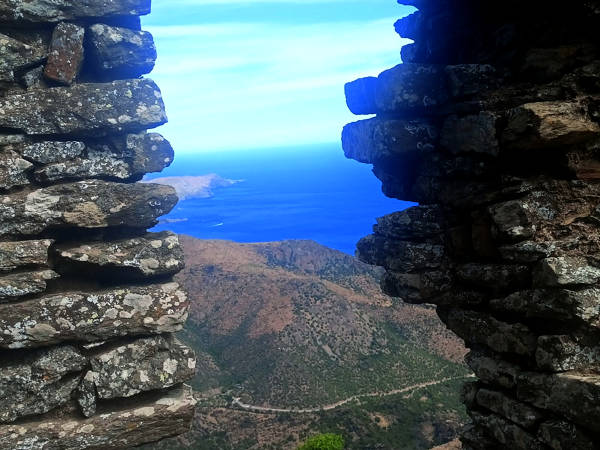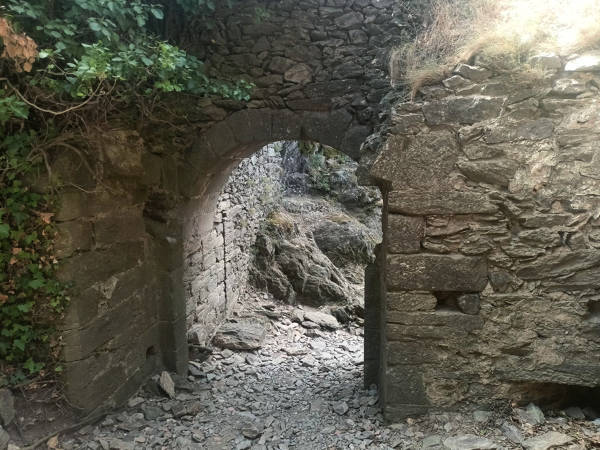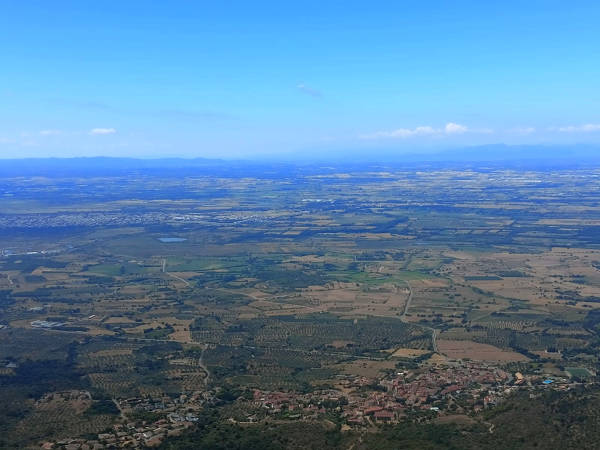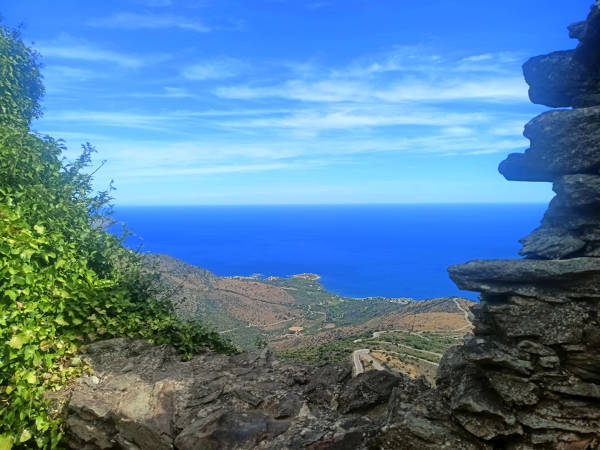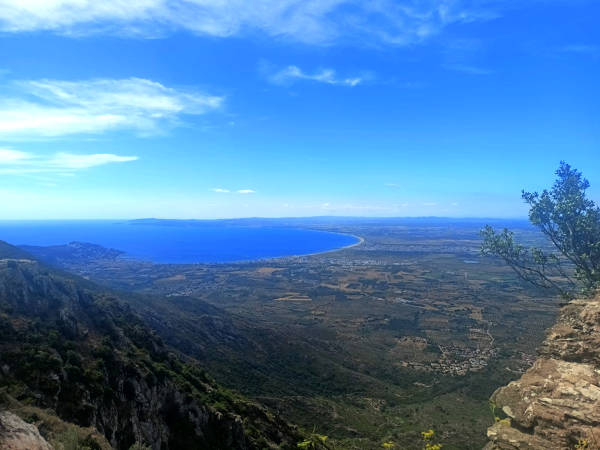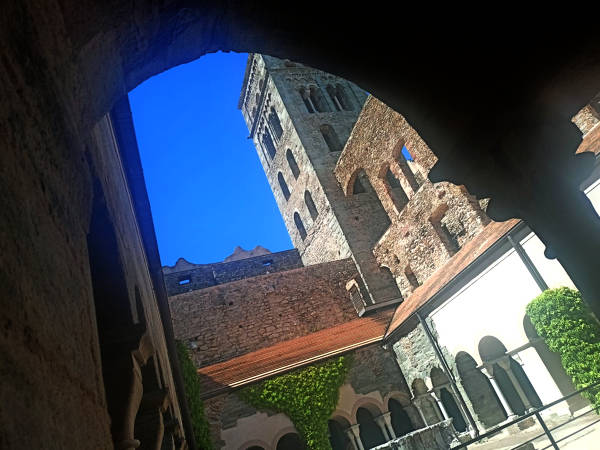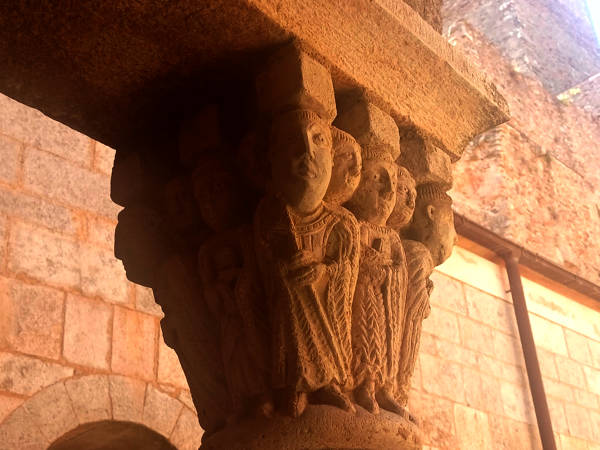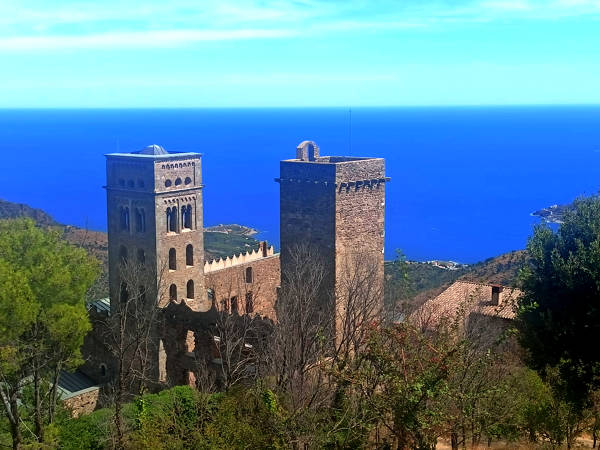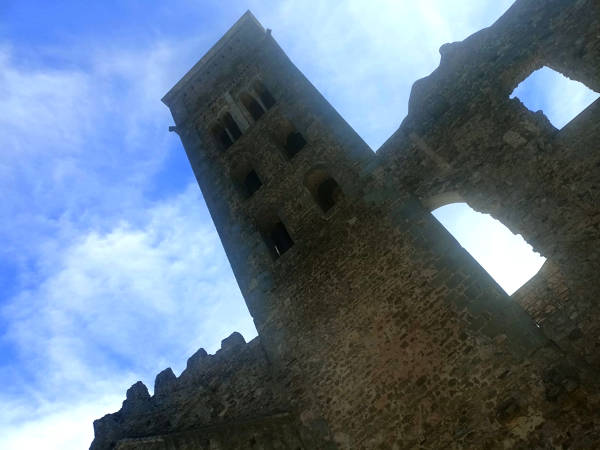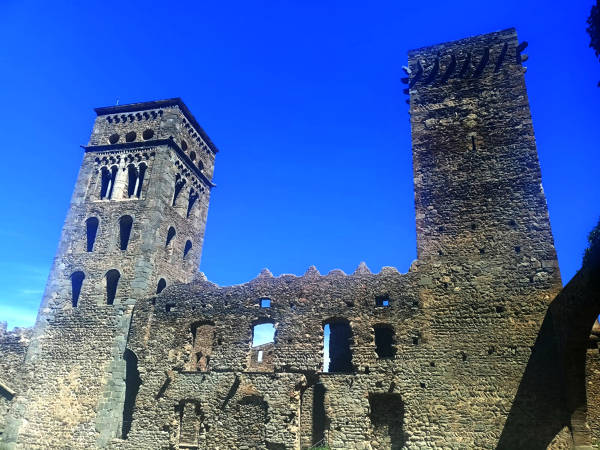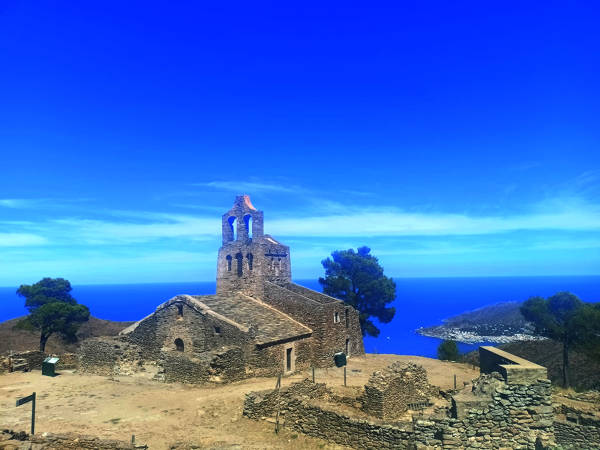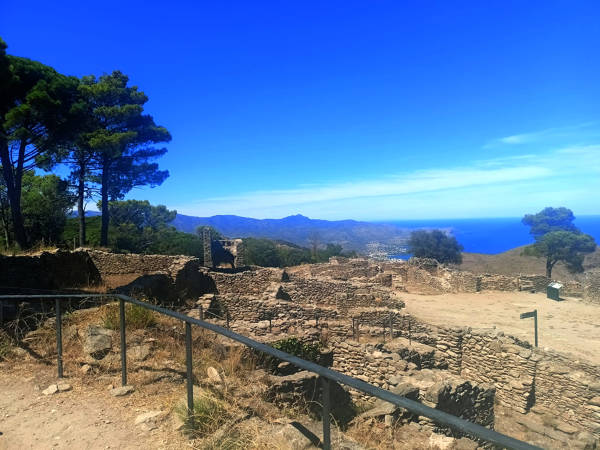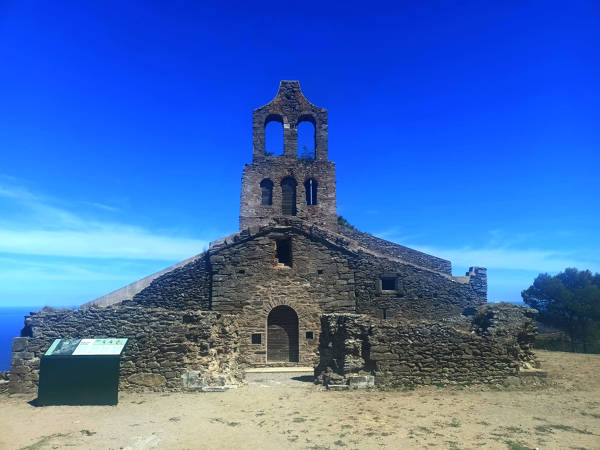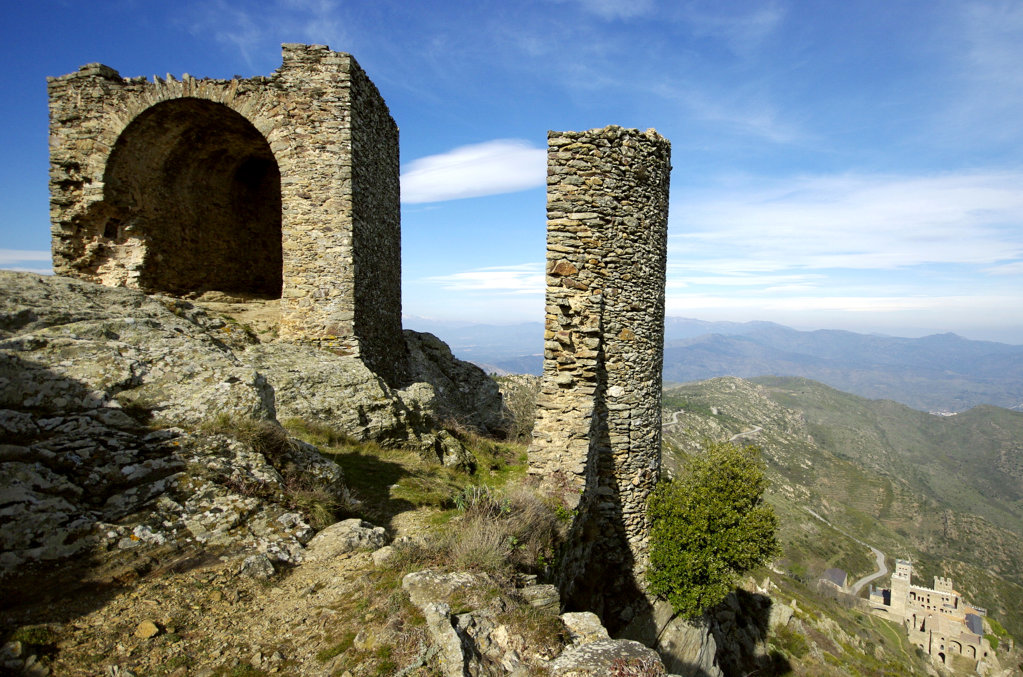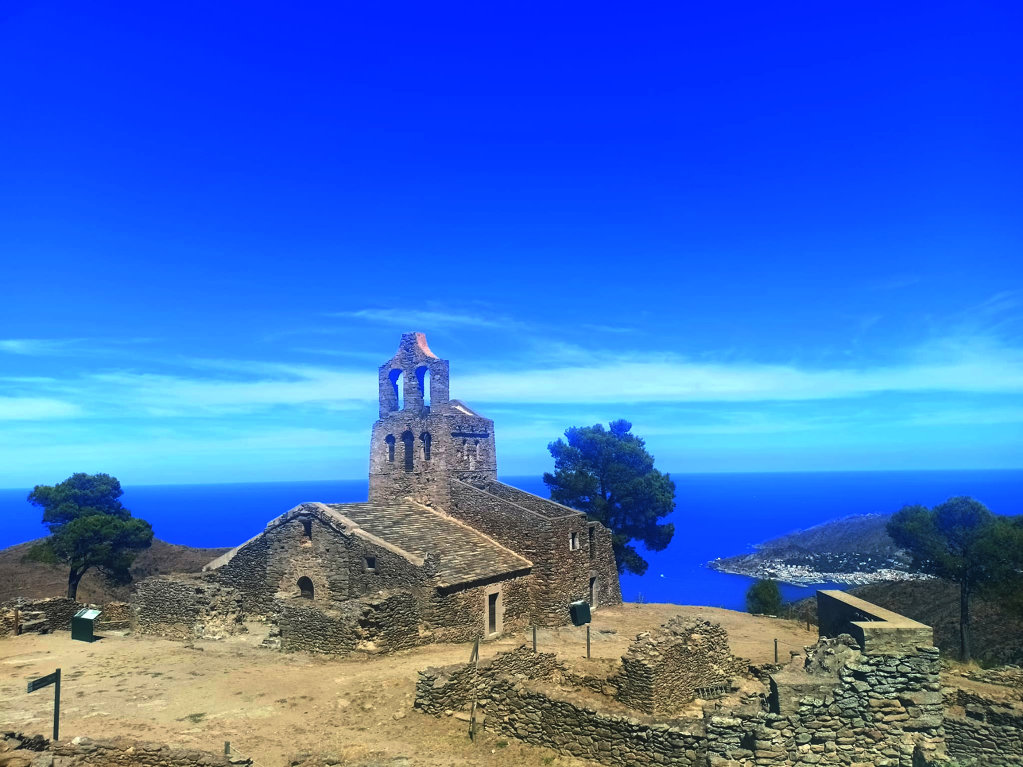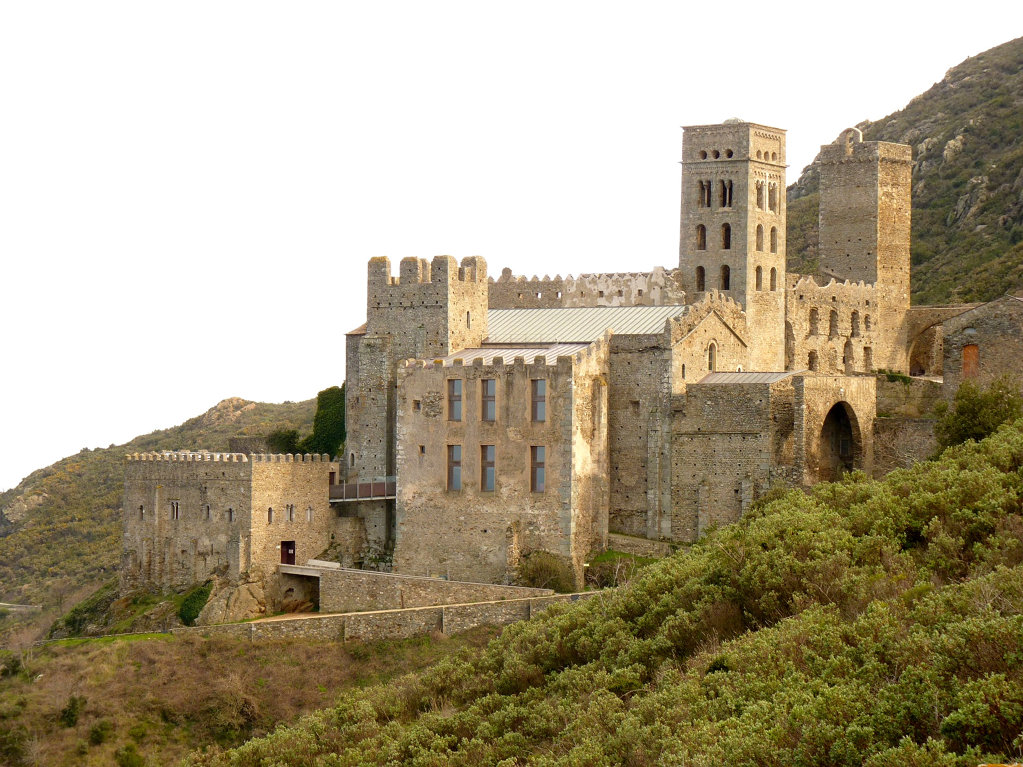
Routes | Routes Port de la Selva
Data sheet
- Duration of the route: 3/6h
- Distance: 2 km
- Childrens: Suitable for children
The Serra de Rodes is home to natural scenery and heritage elements of the highest order. The visit to Sant Pere de Rodes monastery allows us to see this jewel of the Catalan Romanesque architecture at first hand, while enjoying a privileged viewpoint overlooking Cap de Creus and discovering two little-known monuments: Sant Salvador de Verdera castle and the mediaeval village of Santa Creu de Rodes.
Depending on your starting point, you can reach the Sant Pere de Rodes monumental complex from Vilajuïga or from El Port de la Selva. In both cases, there is a road with many curves and a gradient that takes us to a height of 520 metres above sea level.
Sant Salvador de Verdera castle
From the car park we can see how the monastery rises imposingly in front of us, while in the background we enjoy a magnificent view of the coastline. Once here, the best thing to do is to start the route with energy, leave the visit to the monastery for later, and climb up to Sant Salvador de Verdera castle, which rises above our heads.
To go up, we must follow a small path that we find right next to the monastery, which goes up to a height of 670 metres. It is a simple hike suitable for everyone, but it is advisable to bring water and sun protection, especially if you are hiking in summer.
The structures of this magnificent medieval fortress which are still preserved, give us an idea of its dimensions and defensive importance. From the top of the castle, we can enjoy exceptional views over the Eastern Pyrenees and the Empordà. It's a visit that is well worthwhile.
Sant Pere de Rodes Monastery
We retrace our steps to head towards Sant Pere de Rodes monastery. It is advisable to have previously consulted the opening days and times on their website, as well as the prices and the possibility of hiring a guided tour.
This architectural jewel of Catalan Romanesque architecture dates back to the 10th-11th century, and during its moment of splendour it became the monastic centre of reference in the county of Empúries. After a long period of abandonment and decadence, the monastery was restored during the last years of the 20th century to conserve its structure and make it open to visitors.
During the excursion, we will be able to enjoy the history and beauty that permeate the different areas that make up the architectural complex: the church, the outbuildings and the cloister.
It will probably be time for lunch during our visit. The monastery itself has a restaurant specialising in traditional cuisine with a daily menu. It is advisable to book a table in advance.
Medieval village of Santa Creu de Rodes
The last point on our route is the medieval village of Santa Creu. It is located just one kilometre from the monastery, above the car park.
The origin of this population centre linked to the monastery of Sant Pere de Rodes dates back to the 11th century, although the existence of a necropolis from the 8th-9th centuries has been documented in the same place.
All the buildings we can see are built around Santa Helena church, a beautiful pre-Romanesque temple that still has almost all of its structure standing.
The archaeological excavation and consolidation works of the structures of this medieval settlement are still active, so it is easy to see recently intervened rooms.
Once the visit is over, we can go down to El Port de la Selva or Llançà and enjoy the end of the day on one of its beaches or coves, or stroll through the town centre.
Extra information: A few days before our route, we can find out the prices and visiting hours of the monastery of Sant Pere de Rodes on its website.
